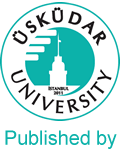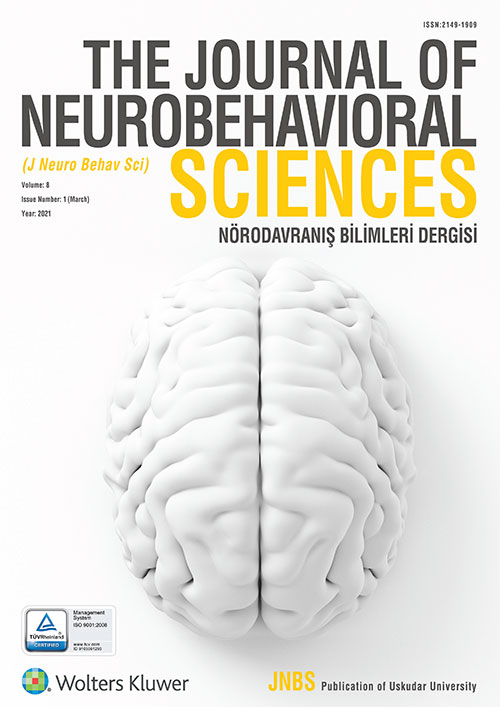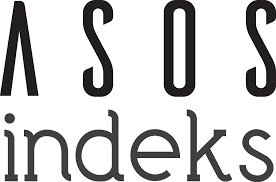Original Article
Turkish Title : The Mind − Brain Problem from the Perspective of Agency
A. ÇENGEL Yunus
JNBS, 2022, 9(1), p:7-16
Abstract
Aim: In this article, it is argued that the elusive mind qualifies as an active agent which works through
the brain rather than the brain creating the subjective mind or acting as the mind itself. Materials and
Methods: This article relies on observation‑based reasoned arguments and thus it is philosophical in
nature. Discussion: We seem to be living in a virtual reality interwoven of subjective experiences of
sights, sounds, tastes, smells, colors, pain, and pleasure, all rendered by the enigmatic mind. The mind
cannot be reduced to physical existence such as the sporadic electrical activity of the brain since no
electrical activity has ever produced such cohesive subjective experience, the same way that the laws
of physics cannot be reduced to matter and energy that comprise the physical existence. Conclusion:
Unlike properties, agencies differ from emergent quantities in that agencies more than passively qualify
matter; they actively control and rule matter. Agencies are characterized by causal power, and thus
the capacity to cause changes. Several agencies can be identified in nature. The agency of physics is
associated with the physical realm and is comprised of the universal laws and forces of physics. Life
qualifies as a purposive agency which is comprised of the laws and influences of life. Even quantum
fields act like virtual mechanisms and thus qualify as active agents associated with the production of
the fundamental particles of physics with a fixed set of properties out of quanta of energy.
Original Article
Turkish Title : Quantitative Structured Reporting in Dementia Studies with Magnetic Resonance Imaging: Application to Neuroinformatics
Mojtaba Barzegar,Joan Carreras
JNBS, 2022, 9(1), p:7-16
Abstract
Introduction: Nowadays, radiology is playing a very essential role in quantitative imaging
from medical images to quantitative biomarkers. Integration of this numerical information
into structured reports can make it more practical tool for an accurate diagnosis of dementia.
Materials and Methods: This research developed a structured radiological report template for
dementia as an automated integration of quantitative imaging biomarkers of magnetic resonance
images into neurological structured reporting as a new achievement in the Management of Radiology
Report Templates in a more organized style. Results: A significant accuracy rather than free
conventional style for dementia patients. Conclusion: Final aim of this study is making this feature
available to make the best decision on patients with some dementia signs.
Original Article
Turkish Title : Investigation of the Effect of Anxiety Disorder on Time Perception with Zimbardo Time Perspective Inventory
Oguzhan San Huseyin,Sultan Tarlacı,Korkut Ulucan,Tolga Polat,Özge Yılmaz Özlem,Beste Tacal Aslan
JNBS, 2022, 9(1), p:7-16
Abstract
Background: Linguists first coined the term anxiety in the 1600s to define a state of severe restlessness
and worry. When we look at the Turkish dictionaries and printed sources, we see that the definition of
anxiety is made simply as anxiety, fear, and worry. Anxiety; which we can describe as a mental and
physical reaction, a defense strategy, against an event or fear. It will threaten the survival of the life; it is
seen in two ways as situational anxiety and trait anxiety. Situational anxiety, as the name suggests, arises
when faced with a threat or stress factor, while trait anxiety is an anxiety that occurs internally, independent
of the event or situation. Aims and Objectives: For the continuity of one’s cognitive and behavioral
abilities, not only anxiety but also the perception of time has a great place in the continuity of life. The
findings that help us understand one’s time perspective are internal clock models and related mechanisms.
This study aims to investigate the effect of anxiety on time perspective. Materials and Methods: To this
end, the Beck Anxiety Scale, the Zimbardo Time Perspective Inventory, and the demographic information
form were used to collect data. Data were collected from a total of 168 participants, 44 females and
124 males. Results and Conclusion: When the findings are evaluated in general terms, there was a
moderately negative relationship between anxiety and past positive perspective and a moderately positive
relationship between past negative perspective. Based on this result, anxiety prevents a positive perception
of the past; on the contrary, it can be said that it causes a negative perception of the past.
Case Report
Turkish Title : Investigation of the Effect of Anxiety Disorder on Time Perception with Zimbardo Time Perspective Inventory
Toktamış Onur,Şen Cansu Çakır,Tomruk Nesrin Buket
JNBS, 2022, 9(1), p:7-16
Abstract
Gilles de la Tourette (or briefly Tourette) syndrome (TS) is a neurobehavioral disorder that often
begins in childhood and is characterized by motor and vocal tics. Many psychiatric disorders may
accompany TS, attention‑deficit hyperactivity disorder, and obsessive–compulsive disorder being
the most frequent. However, literature regarding the association between TS and psychosis is
controversial. We present a patient who has comorbid TS and psychosis and is treated successfully
with quetiapine.
| ISSN (Print) | 2149-1909 |
| ISSN (Online) | 2148-4325 |
2020 Ağustos ayından itibaren yalnızca İngilizce yayın kabul edilmektedir.














